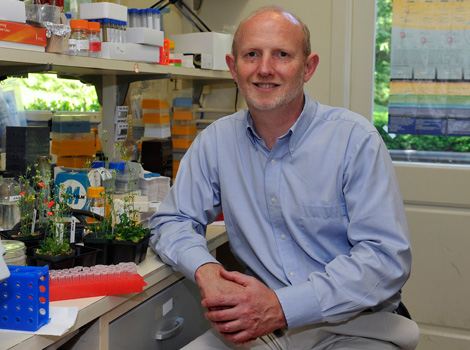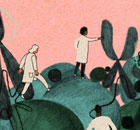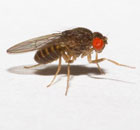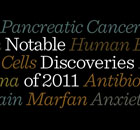15 New Plant Scientists
Plants are intertwined with our lives—sustaining us with food, shelter, and oxygen and nurturing us with shade and beauty. Biologically speaking, we are made of the same stuff; in many ways, the better we understand plants, the better we understand ourselves.
In recognition of the critical importance of plant science, in 2011, HHMI partnered with the Gordon and Betty Moore Foundation (GBMF) to name 15 innovative plant biologists as the first HHMI-GBMF investigators.
Their investigations of the molecules, cells, and systems that drive plants’ growth and environmental interactions offer insights into parallel systems underlying human biology and provide knowledge that can be applied to global challenges.
Plants contribute directly to human health by providing basic nutrition. Therefore, a better understanding of how plants grow and interact with their environments is essential to feed the world more sustainably.
Moreover, because food crops must increasingly compete with biofuels for land and other resources, as we turn to biological alternatives to fossil fuels, we need to know what makes a plant grow efficiently. Plants are also a rich source of pharmaceuticals. Yet, fundamental plant research has long been underfunded and underappreciated in the United States.
As HHMI considered opportunities to advance science in new ways, plant science emerged as an area where the Institute could make important contributions. In 2008, HHMI gathered leaders in the field to discuss the future of plant biology, and workshop attendees concluded that additional investment in the plant sciences was timely and important.
Many of the same molecular tools and technologies accelerating the pace of biomedical research offer the potential for tremendous gains in plant research. Yet, restrictive funding has forced even the best plant biologists to limit the scope of their work.
HHMI and GBMF, a California-based foundation that seeks positive change by supporting fundamental nonbiomedical research and environmental conservation, recognized that enabling creative plant biologists to pursue bold research could result in large contributions to science and society.
“These outstanding plant biologists are doing research that will, in a variety of ways, have an impact on human lives,” says Jack Dixon, HHMI’s vice president and senior science officer. “We hope that their contributions through the HHMI-GBMF program will encourage further support of plant biology from other funding institutions.”
The 15 HHMI-GBMF investigators, selected in a nationwide competition, are leaders in a variety of fields. Many have dedicated their careers to the study of plants, captivated early on by the symmetry of a flower or the efficient transformation of sunlight to energy. Others are immunologists, developmental biologists, and geneticists who—like HHMI—welcomed plants into their research programs because they offer unique opportunities to address the questions the scientists considered most important.
In labs at 13 host institutions throughout the country, the new investigators are exploring ways to make photosynthesis more efficient, elucidating the mechanisms that coordinate flowering to environmental conditions, and investigating how roots are formed.
Their studies have already improved the nutrition of a strain of wheat, identified a strategy plants use to recognize pathogens (later found to also help protect human cells), and uncovered surprising similarities in the ways plants and humans switch genes on and off.
Using powerful genetic tools, keen powers of observation, and bustling greenhouses, the HHMI-GBMF plant biologists are following their curiosity about biological processes that pique the interest of many other HHMI scientists: stem cells, cellular communication, host-microbe interactions, and genetic regulation. Their unique perspectives can only be an asset.
As Jeff Dangl, HHMI-GBMF investigator at the University of North Carolina at Chapel Hill, says, “The more oblique views a community can have bearing down on their problem, the better off it's going to be.”































































